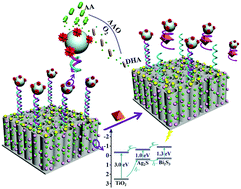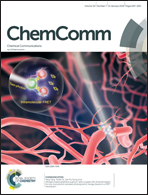An in situ electron donor consumption strategy for photoelectrochemical biosensing of proteins based on ternary Bi2S3/Ag2S/TiO2 NT arrays†
Abstract
An ascorbic acid oxidase (AAO)–ascorbic acid bioevent-based electron donor consumption mode was introduced into the PEC bioassay for the first time. Ternary hybrid bismuth sulfide/silver sulfide/TiO2 nanotube arrays as the photoelectrode coupled with AAO attached to SiO2 as a dual signal quenching strategy were employed for sensitivity enhancement.



 Please wait while we load your content...
Please wait while we load your content...